Are There Health Benefits Of Salmon?
Salmon is not just another item on the menu; it’s a powerhouse of nutrition that has captivated the attention of health enthusiasts worldwide. Boasting a remarkable nutritional profile, salmon is an integral part of various diets, praised for its heart health benefits, weight management properties, and mental health and cognitive benefits, among others. In this essential guide, we will dive deep into the health benefits of salmon, providing you with comprehensive insights that go beyond the typical health hype.
Heart Health Hero
Omega-3 Fatty Acids and Their Role
Omega-3 fatty acids are the stars of the heart health show. Found abundantly in salmon, these essential fats play a vital role in reducing inflammation throughout the body, including in the heart. They are also known for lowering blood pressure and decreasing risk factors for heart disease, making salmon an excellent choice for a heart-healthy diet.
The Power of B Vitamins
Contribution to heart health: B vitamins found in salmon contribute significantly to heart health by supporting energy production, reducing inflammation, and aiding in the repair of damage to heart tissue.
Energy production: The B vitamins in salmon assist in converting the food we eat into energy, ensuring our hearts have the necessary fuel to keep beating strong.
Reduction of inflammation and repair of damage: These vitamins also play a crucial role in reducing inflammation and repairing heart tissue, important factors in maintaining a healthy heart.

Potassium’s Part
in Heart Health
Potassium, another key nutrient in salmon, contributes to heart health by lowering blood pressure, balancing fluids in the body, and supporting nerve function. With its rich potassium content, salmon offers an additional layer of protection for your heart.
Weight Management Wonder
Protein-Packed for Satiety
The high protein content in salmon not only helps in feeling full, which is crucial for weight management but also has positive effects on metabolism. Compared to other protein sources, salmon stands out for its ability to satisfy hunger with fewer calories, making it an excellent choice for those looking to manage their weight.
Low-Calorie but Nutrient-Dense
Salmon is the epitome of a low-calorie but nutrient-dense food. This unique combination plays a pivotal role in weight loss and maintenance, offering a plethora of nutrients without the extra calories often found in other foods.
Healthy Fats for a Healthy Weight
Omega-3 fatty acids, the healthy fats in salmon, are essential not only for heart health but also for weight management. These fats differ significantly from unhealthy fats and play a crucial role in maintaining a healthy weight. Strategies for integrating salmon into a weight management plan include substituting it for less healthy protein sources and incorporating it into a balanced diet.

Mental Health and Cognitive Benefits
Omega-3s and Brain Health
Omega-3 fatty acids are not only beneficial for the heart but also play a critical role in brain health. They have a significant impact on the brain structure and are being studied for their role in mental health treatment and their preventative effects on cognitive decline.
Vitamin D’s Role in Mental Health
Salmon is a unique source of Vitamin D, a nutrient that has shown promise in influencing mood disorders and acting as a neuroprotective agent. The role of Vitamin D in mental health further underscores the importance of including salmon in your diet.
The Sleep Connection
The link between Omega-3, Vitamin D, and sleep quality highlights the potential of dietary choices, such as salmon, to improve sleep. Practical advice for enhancing sleep through diet includes incorporating salmon into evening meals to leverage its Omega-3 and Vitamin D content for better sleep quality.

Skin and Joint Health
Anti-inflammatory Effects
The anti-inflammatory effects of salmon benefit not only the heart and brain but also the skin and joints. For those suffering from skin conditions or joint pain, salmon’s nutrients offer relief and contribute to overall health.
Collagen and Skin Elasticity
Thanks to its protein and omega-3 content, Salmon’s role in collagen production has positive effects on skin health and aging. This nutrient synergy makes salmon an excellent food for skin care, promoting elasticity and reducing signs of aging.
The Vitamin Mix for Mobility
Nutrients in salmon, particularly vitamins B and D, support joint health by promoting flexibility and preventative aspects for conditions like arthritis. This adds another layer to the many benefits of salmon, emphasizing its role in maintaining mobility and joint health.
The Eye Health Equation
Omega-3s: Vision’s Ally
The Omega-3 fatty acids in salmon offer protection against age-related macular degeneration, dry eye syndrome, and glaucoma, serving as a crucial ally for vision health.
Antioxidant Properties of Salmon
Astaxanthin, a potent antioxidant found in salmon, plays a significant role in eye health by combating oxidative stress. Comparing astaxanthin’s antioxidant properties with other antioxidants underscores its unique benefits.
Nutrient Absorption and Eye Health
Salmon aids in the absorption of crucial nutrients for eye health, emphasizing the importance of fat-soluble vitamins. Dietary adjustments for improved eye health include incorporating salmon for its nutrient profile and absorption benefits.
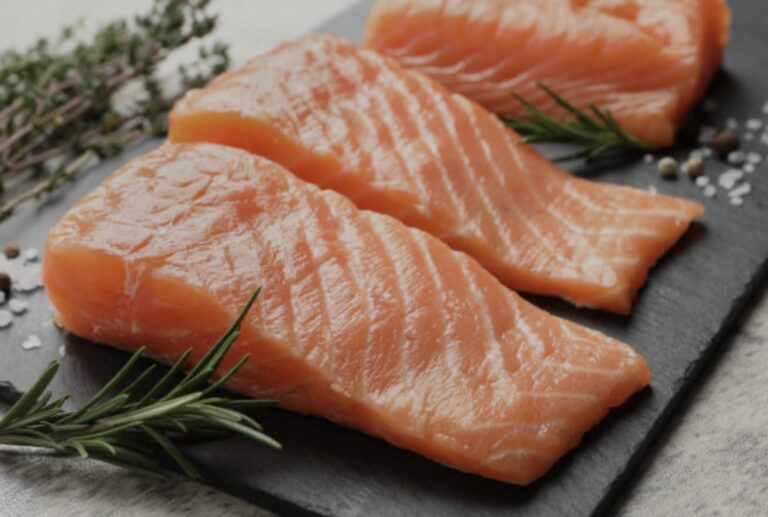
Salmon is much more than a delicious entrée; it’s a nutrient powerhouse that offers a wide range of health benefits. From supporting heart health and managing weight to enhancing mental wellness and promoting skin and joint health, salmon stands out as a superfood. Incorporating salmon into your diet is a step towards a healthier lifestyle, moving beyond the hype to embrace the genuine health benefits it offers.
Salmon Sensations: Simple and Delicious Recipes to Satisfy Your Seafood Cravings
Ah, salmon. This pink, tender fish is not just a powerhouse of omega-3 fatty acids; it’s also incredibly versatile and just downright delicious. Whether you’re a kitchen newbie or a seasoned chef, there’s always a new salmon recipe waiting for you to try. Today, I’m here to walk you through some simple yet mouthwatering salmon dishes that will elevate your dinner game to the next level. Ready? Let’s dive in!
The Basics: Prepping Your Salmon
Before we get to the good part (the recipes, of course!), let’s cover some basics. Working with salmon can be as easy or as complicated as you make it, but I’m here to make sure it’s the former for you. Here are a few tips to keep in mind:
Freshness is key. Make sure your salmon is fresh (it should smell like the ocean, not fishy) or, if you’re using frozen, that it’s properly thawed.
Skin on or off? This is more a matter of preference, but cooking salmon with the skin on can help keep it moist. Don’t worry; I’ll guide you through both methods in the recipes below.
Pat it dry. Before seasoning or cooking, always pat your salmon dry with paper towels. This helps achieve that delicious, crispy exterior we all love.
With these tips in your cooking arsenal, you’re already halfway to making a scrumptious salmon dish. Next stop: the recipes!
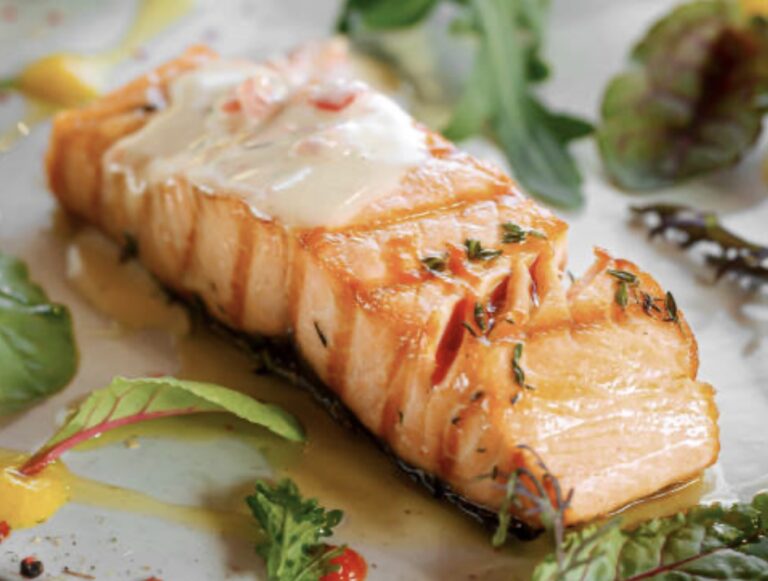
Recipe 1: The Classic Pan-Seared Salmon
Ingredients:
4 salmon fillets (6 ounces each)
Salt and pepper to taste
2 tablespoons of olive oil
Optional: lemon slices and fresh dill for garnish
Directions:
Season the salmon with salt and pepper.
Heat the olive oil in a large non-stick pan# Simple And Delicious Salmon Recipes That Will Make Your Taste Buds Dance
Salmon is one of those incredible ingredients that can take the spotlight on a fancy dinner or add elegance to a quick weekday meal. It’s versatile, filled with healthy fats, and downright delicious. No matter where you stand on your cooking journey, from beginner to experienced home chef, we have something here for you. Today, we’ll dive into some simple yet scrumptiously effective ways to turn that piece of salmon into a meal to remember. Let’s reel in those flavors!

The Perfect Pan-Seared Salmon
Picture this: a beautifully crispy skin on the outside, perfectly tender and flaky on the inside. Achieving the perfect pan-seared salmon sounds like a culinary feat, but it’s simpler than you think. Here’s how:
First, ensure your salmon fillets are dry. Pat them down with a paper towel; this is crucial for that crispy skin. Season with salt and pepper, or feel adventurous and mix in some garlic powder and paprika. Next, heat a pan over medium-high heat. A non-stick pan can make your life easier, but a well-oiled cast-iron skillet brings out an incredible flavor and texture.
Once the pan is hot, lay the salmon skin-side down. Here’s the catch – resist the urge to move it around. Let it cook untouched for about 5-6 minutes, depending on the thickness. Flip it over, and give it another 3-4 minutes. The result? A perfectly pan-seared salmon with a golden, crispy skin.
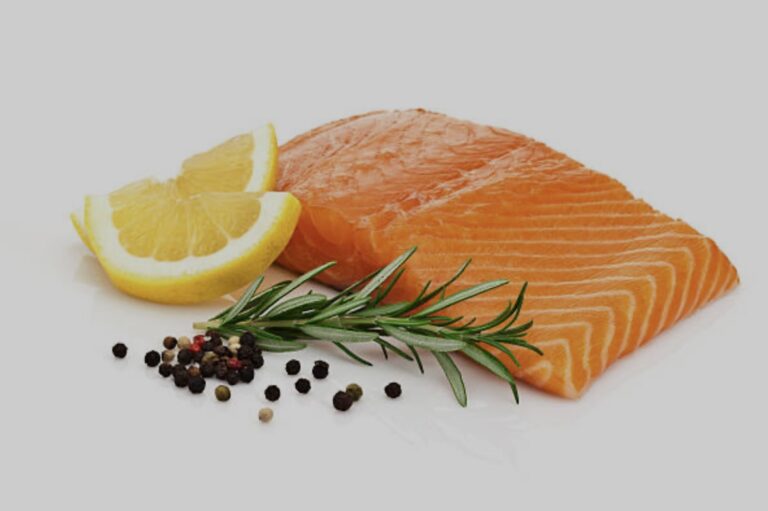
Zesty Lemon Herb Baked Salmon
If you’re looking for a “set it and forget it” meal, baking salmon is the way to go. For a fresh and flavorful twist, let’s talk about making a zesty lemon herb-baked salmon.
Ingredients:
Salmon fillets
Olive oil
Lemon (both juice and zest)
Fresh herbs such as dill, parsley, or thyme
Salt and pepper
Preheat your oven to 400°F (200°C). While it’s warming up, line a baking sheet with foil or baking paper for an easier cleanup. Place your salmon on the sheet, and drizzle it with olive oil. Sprinkle with salt, pepper, and your choice of herbs. Don’t forget the lemon – zest it first, then squeeze the juice over the fish. This not only adds a zing of freshness but keeps the salmon moist as it cooks.
Bake for 12-15 minutes or until the salmon easily flakes with a fork. This method is not just foolproof but also infuses the salmon with the aromatic flavors of the herbs and the brightness of the lemon.
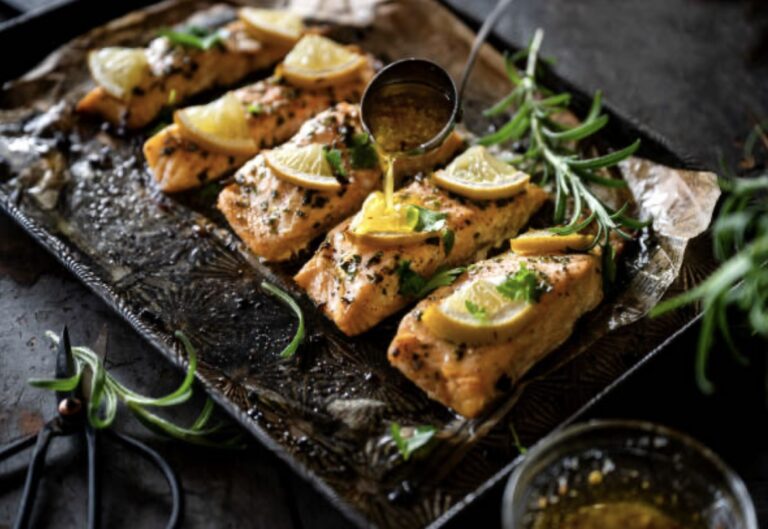
Honey Glazed Salmon: A Sweet Take
Ready to sweeten the deal? Let’s create a glaze that brings a delightful sweetness to your salmon, perfectly balanced with the richness of the fish.
Ingredients for the glaze:
Honey
Soy sauce (low sodium is fine)
Garlic, minced
Optional: A dash of ginger or a sprinkle of chili flakes for a kick
Combine these ingredients in a small bowl. Then, simply brush this mixture over your salmon fillets before cooking. You can either bake them at 400°F (200°C) for 12-15 minutes or pan-sear them for a quicker meal. As you cook, the glaze caramelizes slightly, creating a beautiful, glossy finish with a mouthwateringly complex flavor profile. This is one of my favorite ways to do salmon, I love the savory sweet flavors.
Salmon is undoubtedly a superstar ingredient, capable of being the centerpiece in a variety of dishes. Whether you’re in the mood for the crispiness of a pan-seared fillet, the freshness of lemon and herb in a baked delight, or the sweet and savory dance of a honey-glazed dish, salmon has got you covered.
Remember, the key to a great meal is not just the recipe but the love and care you put into preparing it. Experiment with these ideas, tweak them to your liking and don’t be afraid to try new flavors and techniques. The kitchen is your playground, and salmon is one ingredient that’s always ready to play along. Happy cooking, and may your taste buds always dance with joy!
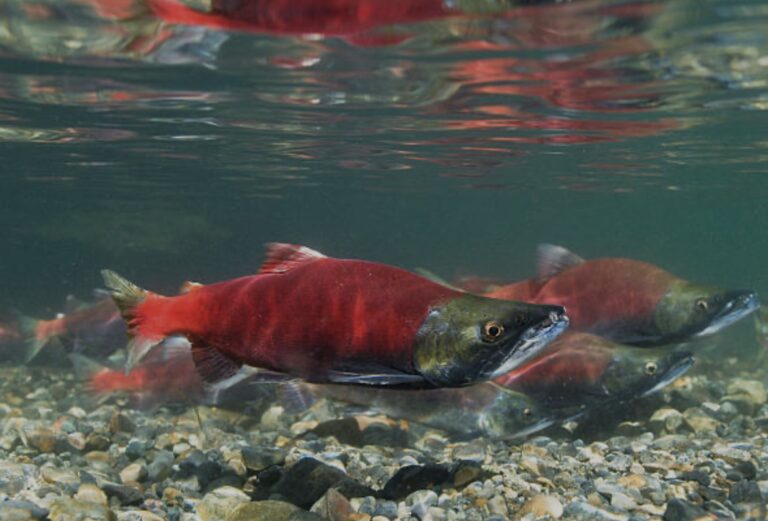
The Great Debate: Wild Salmon vs. Farmed Salmon
When it comes to salmon, a favorite among seafood lovers, the debate between wild and farmed varieties is a hot topic. Whether you’re a health enthusiast trying to make the best choice for your diet or a culinary explorer eager to understand the flavors that best suit your palate, understanding the differences between these two sources of salmon is vital. This part of the blog post dives deep into the world of wild and farmed salmon, exploring the nuances that set them apart.
Taste and Texture: A Culinary Perspective
The debate often starts with taste and texture, which can significantly vary between wild and farmed salmon. Wild salmon tend to have a more vibrant, complex flavor profile, attributed to their diverse, natural diet. In contrast, farmed salmon often have a milder taste and a fattier texture due to controlled diets and less rigorous swimming conditions. The textural differences arise from their lifestyle; wild salmon typically exhibit firmer flesh due to their constant movement and natural environment, while farmed salmon can be softer or more buttery.
Comparing the Color
Wild Salmon: The unmistakable rich, red-to-orange hue of wild salmon comes from their natural diet, rich in krill and shrimp.
Farmed Salmon: Farmed salmon, however, are often fed a diet that includes astaxanthin, a carotenoid used to mimic the color of wild salmon.
Health Impacts: What’s On Your Plate?
The nutritional content of salmon, whether wild or farmed, is a significant consideration for health-conscious individuals. Both types offer high-quality proteins, essential omega-3 fatty acids, and various vitamins and minerals. However, there are noticeable differences in their omega-3 to omega-6 fatty acid ratios, contaminant levels, and calorie counts due to their distinct living environments and diets.

Nutrient Comparison
Omega-3 Fatty Acids: Wild salmon typically boasts higher levels of omega-3 fatty acids, which are crucial for heart health, when compared to its farmed counterpart.
Contaminants: Farmed salmon can contain higher levels of contaminants such as PCBs, though it’s worth noting that the health risks are often debated among scientists.
Calories and Fat: Farmed salmon tend to have more fat and, consequently, more calories. However, this also makes them a richer source of vitamin D and omega-3s.
Sustainability and Environmental Impact
The sustainability of wild versus farmed salmon is a complex issue, encompassing the health of ecosystems, local economies, and global food security. Wild salmon are integral to their ecosystems, supporting a wide range of wildlife. However, overfishing poses a severe threat to these populations. Farmed salmon, alternatively, offer a more constant supply but raise concerns regarding pollution, disease, and the escape of farmed fish into the wild, potentially threatening wild populations.
Key Points on Sustainability
Ecosystems: Wild salmon help maintain the balance within their aquatic ecosystems.
Farming Practices: Sustainable farming practices and technologies are continuously being developed to mitigate the environmental impact of salmon farming.
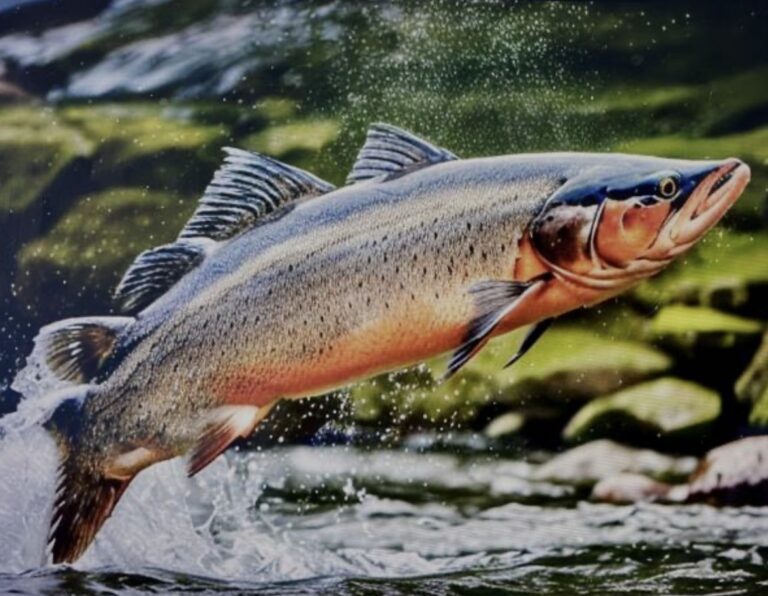
So, Which Should You Choose?
Choosing between wild and farmed salmon often comes down to personal preference, priorities regarding health, and environmental considerations. If flavor is your main criterion, wild salmon’s robust taste might appeal to you more. From a health perspective, while both offer valuable nutrients, wild salmon has the edge in terms of omega-3 content and lower contaminant levels. However, if you’re concerned about environmental sustainability, the choice becomes more nuanced.
The debate between wild and farmed salmon is intricate and multifaceted. By understanding these differences, you become better equipped to make informed decisions that align with your dietary needs, culinary preferences, and ethical considerations. Remember, whether you opt for wild or farmed, incorporating salmon into your diet is a step towards a healthier lifestyle.
Frequently Asked Questions
Eating salmon twice a week is a good goal for most individuals to enjoy its health benefits.
Yes, canned salmon retains many nutrients as fresh salmon and can be a convenient, budget-friendly option.
While salmon is healthy, eating it in moderation is key due to potential contaminants like mercury. Sticking to recommended amounts minimizes risks.
Grilling, baking, or steaming salmon are great ways to preserve its nutrients and health benefits.
Yes, by focusing on plant-based sources of Omega-3s, B vitamins, and Vitamin D, vegetarians, and vegans can achieve similar health benefits, although it may require more careful planning.


